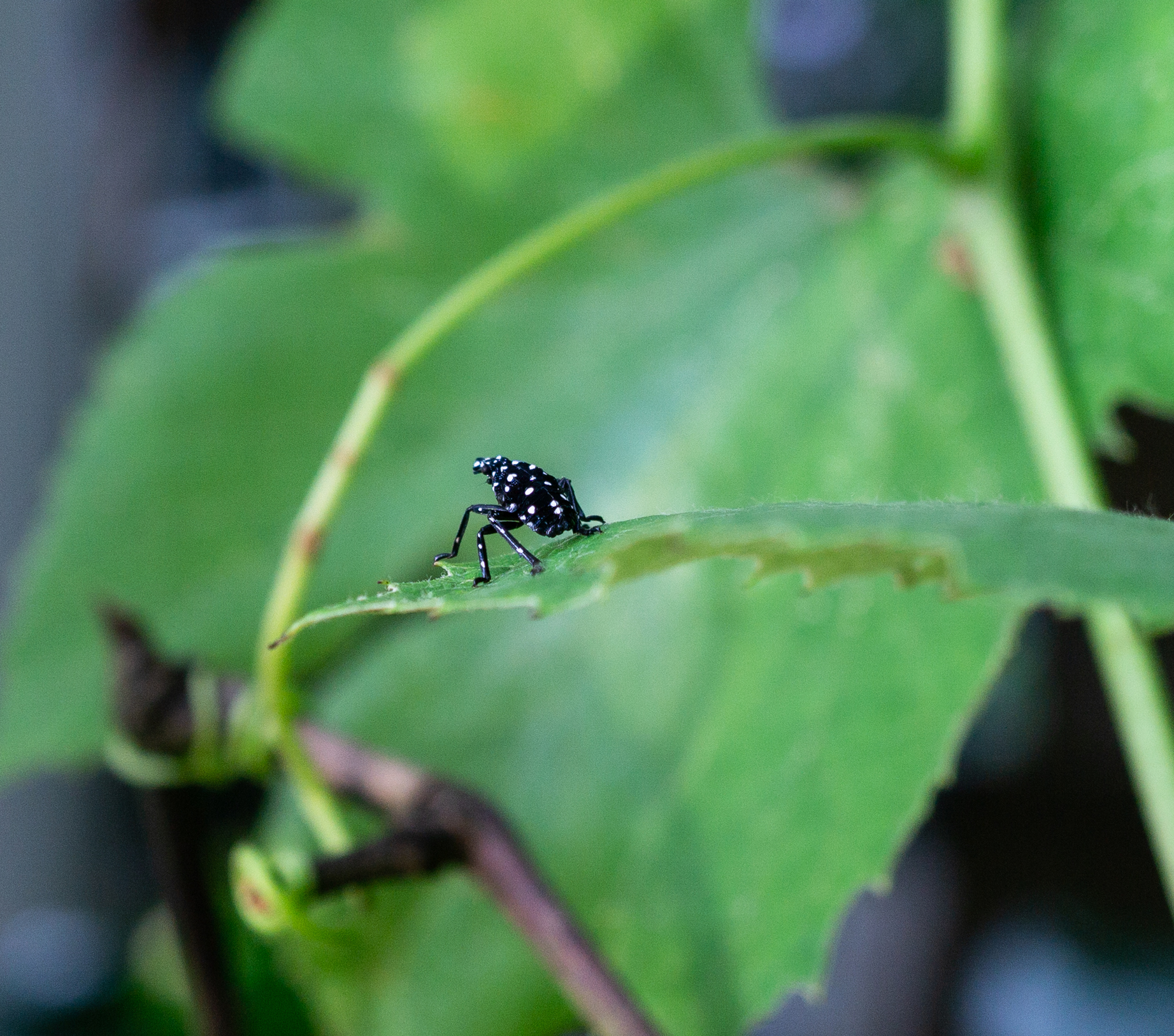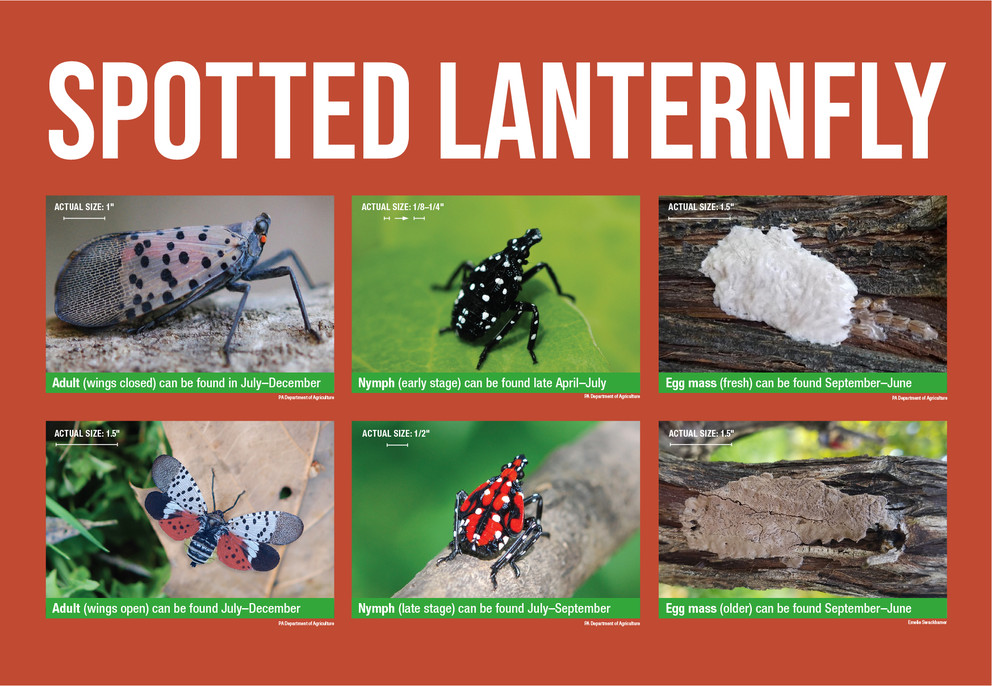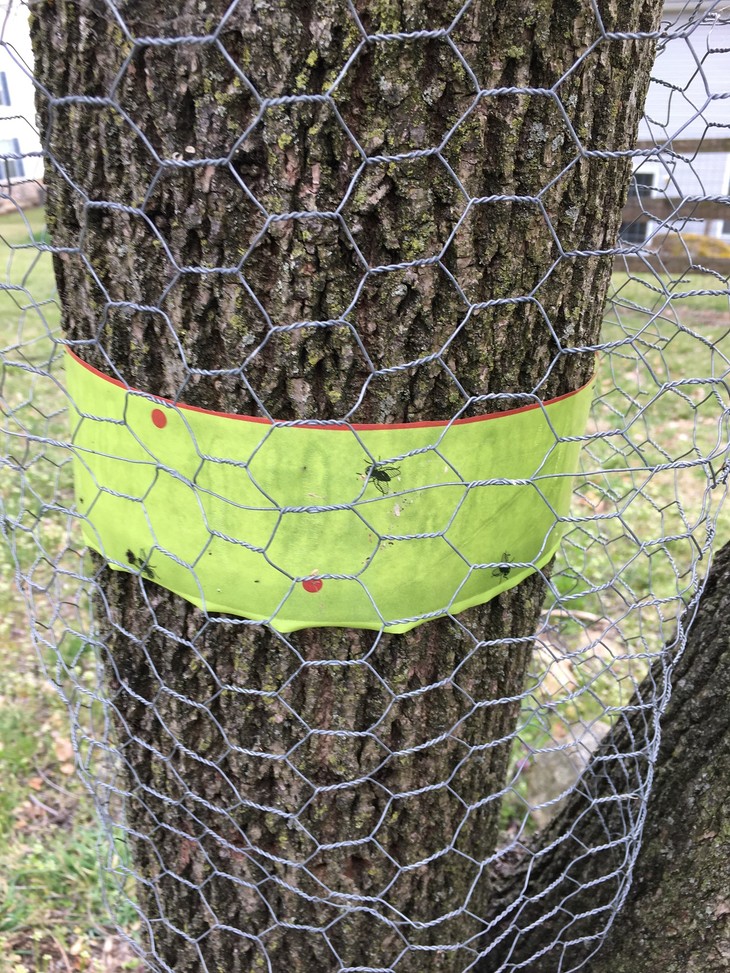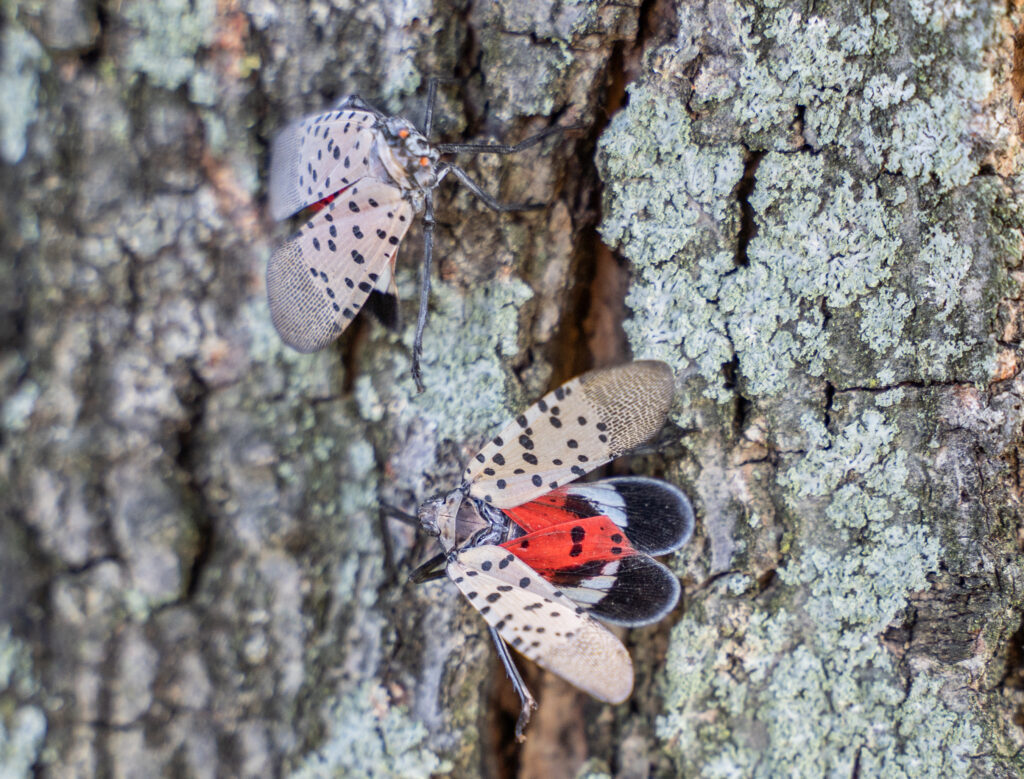The spotted lanternfly originally came to the U.S. from their native China. It is not known how. They first appeared in Pennsylvania in the year 2014, and have since made their way to six other states, including New York and New Jersey. They are considered to be a serious pest. They feed on the sap of trees, often weakening them, and in some cases causing them to die completely.
There is cause for concern now that the spotted lanternfly has become established in this country because after being introduced in Korea in 2006, the spotted lanternfly became an invasive species causing extensive damage. They can impact a number of cash crops, such as fruit orchards, grape vineyards, and nut trees, potentially causing damage which could soar into the billions of dollars.
The information below will help you to identify the spotted lanternfly, so you can take the proper steps to eliminate them from your area, and protect your trees and vegetables from them.
What SLF damage looks like

Here are some of the most common results which are easily observable after spotted lanternflies have been feeding on your trees or other plants:
- leaves wilting or curling up
- sap spilling out of wounds made in the tree
- individual branches dying off
- the unusual presence of ants or wasps around your tree, which are attracted by the honeydew excreted by the spotted lanternflies
- growth of a sooty, mold fungus on tree trunks and branches, which is encouraged by the presence of the excreted honeydew
How to identify the spotted lanternfly

It’s fairly easy to identify the spotted lanternfly, as it goes through some distinctive seasonal changes. In the springtime, these pests will appear all black in color, with white spots on their exterior. As spring gives way to summer, their color modifies into a bright red with black stripes and white spots. By the time autumn rolls around, the spotted lanternfly will have evolved into a mature, flying insect equipped with brown wings and black dots, one set of bright red wings having black dots, and a body which is striped in yellow and black.
You may also notice the eggs of the spotted lanternfly appearing on your tree trunks, on lawn furniture, or on patio tiles and other hard surfaces. The eggs themselves are coated with a protective covering by the flies, and this coating has the appearance of a blob of white-brown mud. Soon after they hatch, these insects will use their piercing and sucking mechanisms to begin extracting sap and nutrients from the trees where they hatched from.
Which trees are affected by spotted lanternflies
The tree which is most preferred by the spotted lanternfly is known as the tree-of-heaven, which is a species native to China and Taiwan. The tree has also established a presence in Europe and North America and is considered to be an invasive species and a highly undesirable weed. Part of its negative reputation stems from the fact that it is capable of replicating itself extremely rapidly, and can quickly take over an environment once it establishes a foothold.
All other trees which are impacted by the spotted lanternfly are deciduous in nature, and they include apple trees, oaks, maples, nut trees, and willows. The pest will also victimize a number of different vegetables, herbs, and vines, as long as they can provide the sap it needs for feeding.
How to eliminate spotted lanternflies
First of all, if you happen to have a tree-of-heaven in your yard, it would be wise to remove it completely, because it will serve as a powerful attractor to these insects. You should be on the lookout for clusters of their eggs, and these should be destroyed when you find them, so they don’t have a chance to hatch.
As soon as you spot an infestation of the spotted lanternfly in your yard, you should contact the Department of Agriculture (DOA) in New Jersey to let them know. They will send a representative to investigate, and if the infestation is confirmed, they will take all steps necessary to remove the insects and any eggs which may be present.
Generally, the New Jersey DOA will require some kind of information or documentation which makes it likely that these flies are present. A quick phone call to New Jersey’s Department of Agriculture will tell you what kind of information they require so that a trip to your house isn’t wasted.
Another common and safe alternative to killing the spotted lanternfly is to mix water with common house-hold dawn dish soap. Spraying this solution will kill the lanternflies and won’t damage your plants or harm domesticated animals. Using dish soap and water is one of the safest and most effective ways to combat spotted lanternflies in their various stages.

Another commonly used tactic to rid your trees of spotted lanternflies is to use fly-tape. Fly-tape is a sticky tape commonly used to trap and kill house-flies. Should you decide to use this method of spotted lanternfly control, know that the spotted lanternfly is not the only insect or animal that can get caught in the sticky fly-tape. Fly-tape can be detrimental to birds and other essential insects in our ecosystem. Importantly, you must fence off and protect the section of the tree that the tape is applied.
If you have any more questions on how to deal with these invasive pests, please contact us today! Our experienced staff is happy to assist you.

